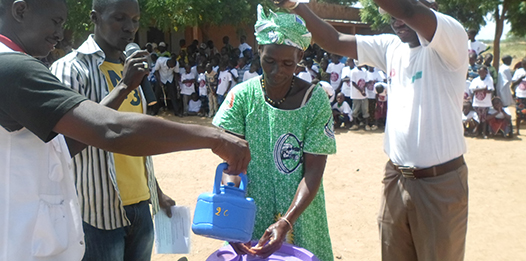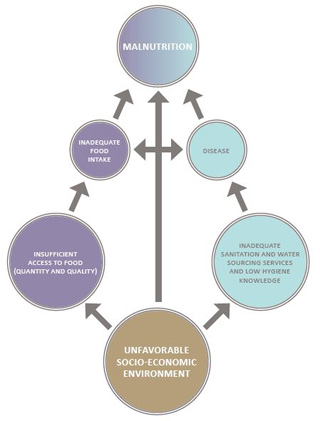
By Erwann Lacoste, Water, Hygiene and Sanitation (WaSH) Advisor at SOLIDARITÉS INTERNATIONAL
The lack of access to water, hygiene and sanitation (WaSH) in thus undeniably one of the underlying causes of malnutrition, as has been shown in countless scientific studies (2).
 The Sahel – The “WaSH in Nut” strategy
The Sahel – The “WaSH in Nut” strategy
In Mali, in the regions surrounding Kolokani, Dire and Kidal, SOLIDARITÉS INTERNATIONAL has implemented 3 WaSH programmes under the banner of the “WaSH in Nut” strategy. Since 2012, this strategy has aimed to systematically include WaSH (Water, Sanitation and Hygiene) in programmes designed to fight malnutrition. Previously the fight against malnutrition was often limited to a medical response, whereby children suffering from Severe Acute Malnutrition (SAM) were treated in the Nutritional Rehabilitation Centres (NRC).
These programmes aim to equip NRCs, hospitals and health centres with sanitation infrastructures -drinking water points, latrines, showers, and waste incinerators – while training the medical staff to maintain them. They also provide malnourished children and their families with a hygiene kit (including containers for the hygienic storage of water, soap, and chlorine tablets), allowing them to follow up on the treatment at home, thereby limiting the risk of relapse.
Finally, these WaSH programmes facilitate the improvement of access to clean drinking water in regions with a high incidence of SAM through community infrastructures (wells, boreholes, and water mains), domestic sanitation (toilets) and hygiene promotion campaigns.
(1) WHO report from 2014 based on data from 2012 (malnutrition fatality rates) / Impact of chronic and severe malnutrition: The Lancet, Maternal and Child nutrition, June 2013).
(2) WaSH and Nutrition studies: http://washnutrition.wordpress.com
